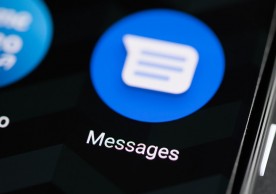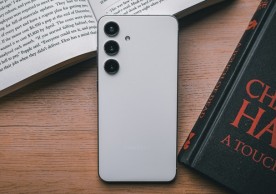Only five months after Nokia released its Windows smartphone, Lumia 900, the Finnish mobile phone-maker decided to release a significant upgrade - Lumia 920.
The Lumia 920 is a beefier version of its predecessor equipped with the latest Windows Phone 8 operating system (OS), a dual-core processor, bigger screen, better camera and a higher resolution.
Form Factor
Lumia 920 (130.3x70.8mm or 5.13x2.79 inches, 185 g or 6.53 oz) is noticeably bigger and heavier than Lumia 900 (127.8x68.5mm or 5.03x2.70 inches, 160 g or 5.64 oz) but surprisingly thinner (10.7mm/0.42inch versus 11.5mm/0.45 inch).
Display
The increase in display size is not the most notable change. The difference is 0.2-inch. However, resolution has been bumped up from 480x800 pixels in the Lumia 900 to 768x1280 pixels in the Lumia 920. Pixel density has also witnessed an increase - from 217 ppi (pixels per inch) to 332 ppi, suggesting that Lumia 920's display is better, sharper and crisper than the iPhone 5's Retina display (326 ppi, 640x1136 pixels).
Processor
The processor has also seen a bump, going from a single 1.4GHZ core to a dual-core 1.5GHZ processor. This noticeable increase gives the Lumia 920 the ability to handle the much more demanding Windows Phone 8 operating system.
Camera
The camera in Lumia 920 has also seen a bump - the new smartphone will be able to record full-HD videos and inclusion of PureView technology means it will be sheer delight to take photos with the new Lumia phone.
Memory, Storage
Nokia has also doubled memory and storage space in Lumia 920, which boasts of 1GB RAM and 32GB internal storage, compared to Lumia 900's 512MB RAM and 16GB storage. The doubling of internal storage is especially important as both the devices, unfortunately, are devoid of microSD card slots.
OS
The fact that the Lumia 920 is equipped with Windows Phone 8 is the biggest reason anyone would want to upgrade, without counting the hardware boost.
Microsoft has completely revamped its flagship mobile OS over the year, bringing it decidedly into the 21st century. Windows Phone 8 supports backwards compatibility with Windows Phone 7 apps, offers improved support for removable storage, features a redesigned home screen incorporating resizeable tiles across the entire screen, and a host of other new features. Most importantly, Lumia 920 will support over-the-air updates and, as Windows Phone 8 has adopted an architecture based on the Windows NT kernel (ditching its previously Windows CE-based architecture), users will be able to easily port many applications between Windows Phone 8 and the new Windows 8 platforms. The benefits will more than likely be felt by the early adopters of Windows Phone 8 who will be able to fly between their new Windows PC's and Lumia 920 with ease.
On the surface there are plenty of reasons to want to upgrade from the Lumia 900 to the 920. However, one major drawback with both phones is the lack of apps in Windows Phone Marketplace. Though Microsoft has not revealed any official figure, there are reportedly over 125,000 apps in the Windows Phone Store (formerly Windows Phone Marketplace), developed by 30,000-odd developers. However, this still pales in comparison to the over 700,000 both Google and Apple claim to have in their respective app stores - Google Play and App Store.
And, this could be reason alone not to choose a Windows Phone device over Android or iOS device, and even less enticing to go for an upgrade.
© Copyright 2020 Mobile & Apps, All rights reserved. Do not reproduce without permission.most read
more stories from Mobile
-
Google Messages Beta Unveils New Gallery Picker UI
Stay updated! Google Messages Beta introduces a fresh Gallery Picker UI. Explore it now for enhanced messaging experience.
ernest hamilton -
Samsung Initiates Development of One UI 7.0 Beta, Based on Android 15, for Galaxy S24 Series
Exciting news! Samsung has begun developing One UI 7.0 Beta, based on Android 15, for the Galaxy S24 series. Stay tuned for the latest updates.
ernest hamilton -
Pixel 8a's First Update to Introduce Google's AI Wallpaper Generator
Stay tuned for Pixel 8a's first update, introducing Google's AI Wallpaper Generator! Don't miss out on this exciting feature.
ernest hamilton -
Google Messages Expands: New Audio Recorder and Voice Moods Now Rolling Out
With Google Messages, you can now enjoy a new audio recorder and voice moods, enhancing your messaging experience. Check it out today!
ernest hamilton -
iOS 17.5 RC Release: Podcasts Widget Update, Enhanced Unwanted Tracking System, Repair State Mode, and More
The iOS 17.5 RC release brings several enhancements, including updates to the Podcasts widget, an improved unwanted tracking system, Repair State mode, and more.
ernest hamilton -
US Revokes Export Licenses to Huawei, Impacting Intel and Qualcomm Chip Sales
The decision to revoke export licenses to Huawei could have significant implications for chip sales by Intel and Qualcomm in the US.
ernest hamilton -
Samsung’s Next Flagship, Galaxy S25 Series to Introduce Innovative 'Battery AI' Feature
Experience innovation like never before with Samsung's upcoming Galaxy S25 Series, set to introduce the groundbreaking 'Battery AI' feature. Learn more in our latest article!
ernest hamilton -
Sony's Next Flagship Unveiled: Xperia 1 VI Promo Images Leak, Showcasing Triple Camera Setup and ZEISS Optics
The leaked promo images of the Sony Xperia 1 VI reveal exciting details ahead of its launch. Dive into the details in our latest article!
ernest hamilton












